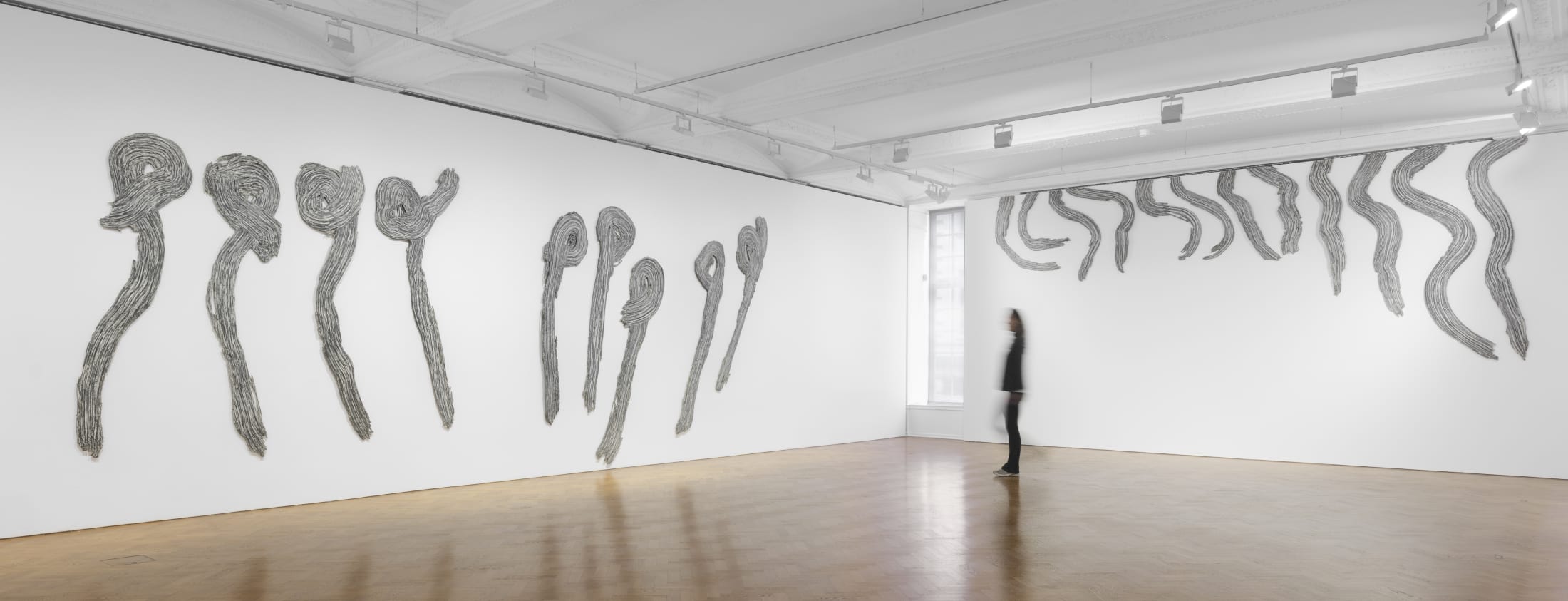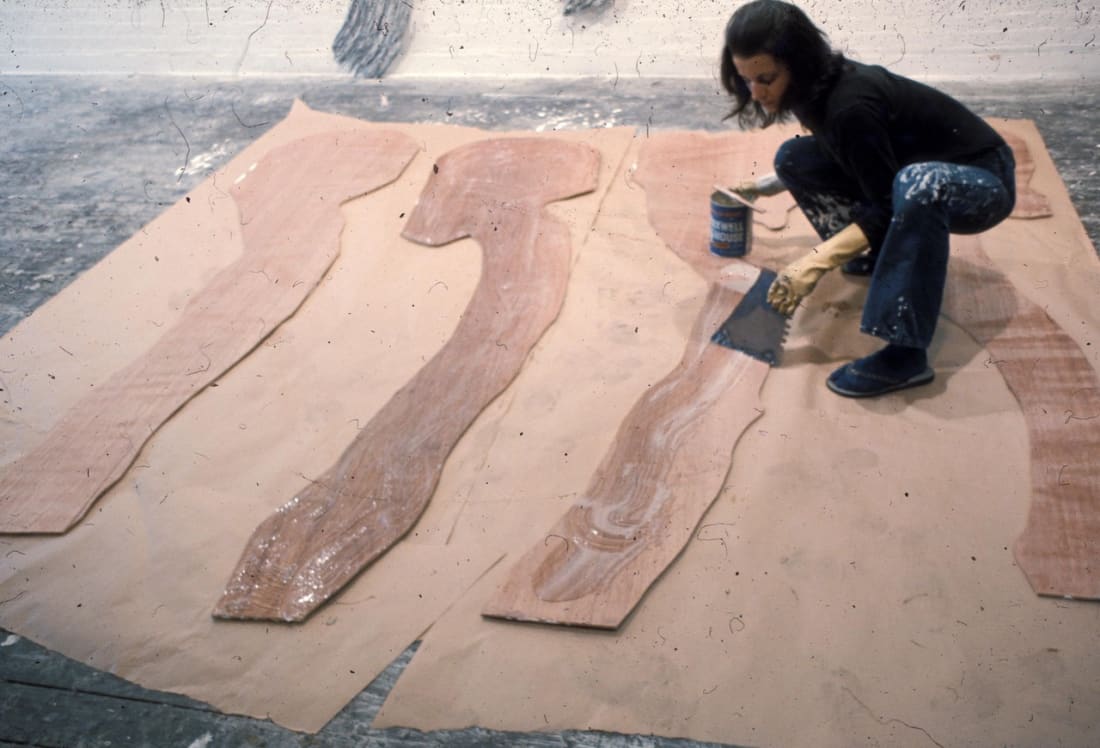As far as I know, I’m the most physical woman artist around. I glory in the physicality of sculpting. It adds a spiritual dimension to making art.
— Rosemarie Castoro, 1987
The first solo presentation in the UK of works by Rosemarie Castoro (1939–2015), a central figure in New York’s Minimal and Post-Minimal art scene, spans four decades of her multidisciplinary practice. The exhibition takes its title from a 1975 article by Lucy R. Lippard, the art critic and curator who identified Castoro as one of the women artists ‘who subverted or overrode Minimalism on its own turf’.
Castoro’s continuous activity focuses on line as a formal solution. Although sexual in its drive, her work is too fast to be sensuous, too controlled to release all of its energy; it exists in a state of extremely structured tension, its momentum expressed with great physical intelligence by implied projection of the body […] into space.
— curator Lucy R. Lippard, 1975
In recent years, Castoro's work has been the subject of retrospectives at MACBA, Barcelona and MAMCO, Geneva, as well as forming part of their permanent collections and those of the Centre Pompidou, Paris and Museum of Modern Art, New York.

Informed by her background in dance, Castoro developed an intensely physical approach to art-making. She found early inspiration in experimental dance and choreography while a student at the Pratt Institute, Brooklyn, and in subsequent collaborations with choreographer Yvonne Rainer in the 1960s. Throughout her life, her work exhibited a distinctly performative character and understanding of space and movement. She projected herself into her works, creating an embodied, eroticised form of abstraction that functions at the intersection of Minimalism and empowered female identity.
With her art of constant renewal and regeneration, Rosemarie Castoro is a master of metamorphosis. Her forms are embodied ideas, and every series evolves organically from one proposition to another.
— writer Rachel Stella, ‘Metamorphosis and Transmigration’, 2022

Defying easy categorisation, Castoro considered herself a ‘paintersculptor’. Her illusionistic giant Brushstrokes are a sculptural interpretation of the most basic element of painting, sometimes appearing to grow from the walls. This interplay between artwork and architecture represented the artist’s desire to ‘relate to myself as a building […] parts of me coming off different parts of the wall’.
Gentless (Brushstroke), 1972
Masonite, gesso, marble dust, modelling paste, graphite
223.5 x 86.4 cm (88 x 34 in)
(RC 1190)
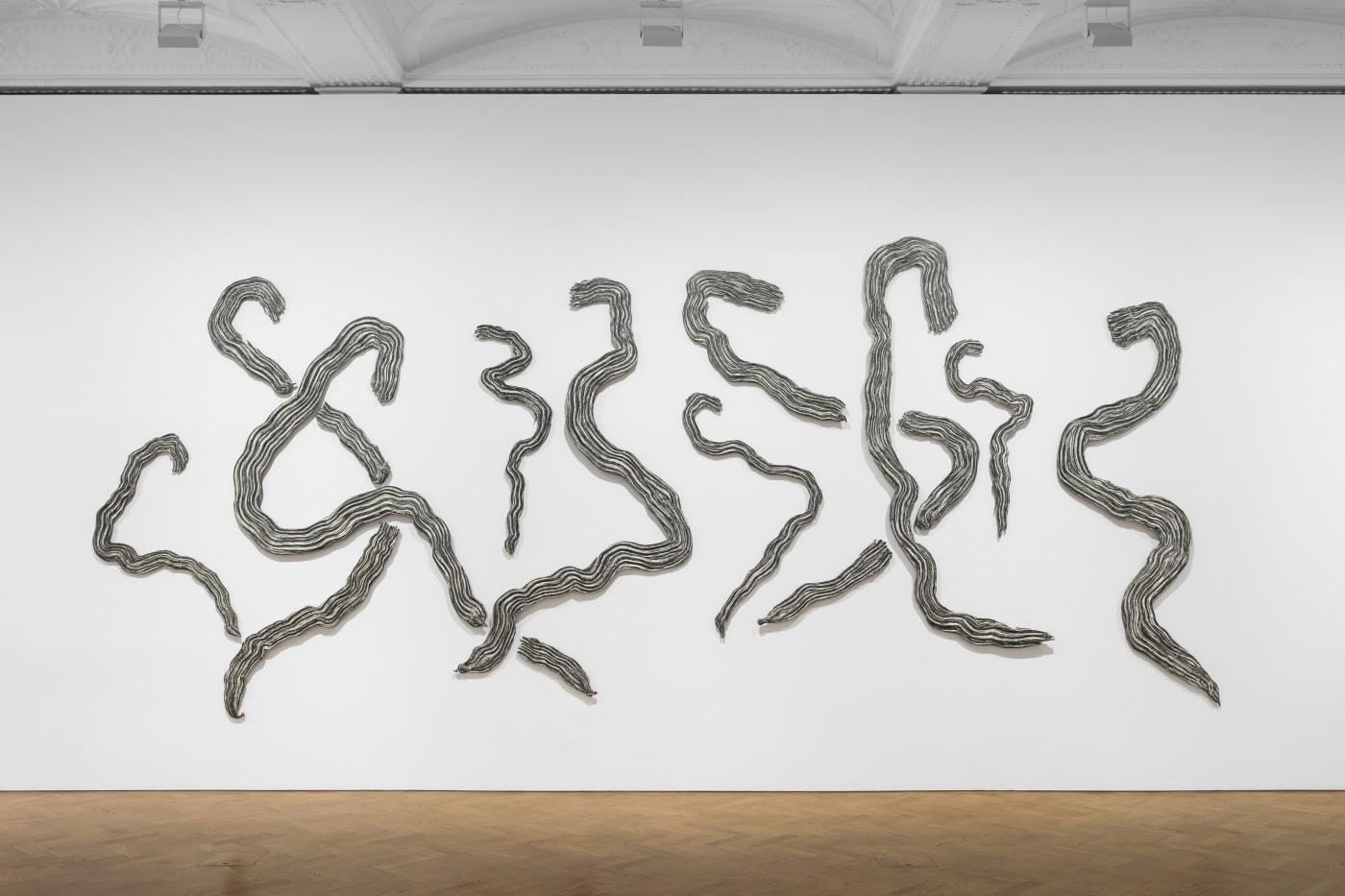

The Brushstrokes were created by applying a mixture of gesso, modelling paste and marble dust to Masonite panels with a broom or other non-artist brushes, leaving large gestural striations into which Castoro rubbed graphite. She then carefully cut out the shapes, using a sabre saw to create the delicate, fragmented edges that heighten the illusion of an enlarged brushstroke on the wall. The earliest Brushstrokes consisted of single flowing strokes, which later grew into multi-part wall installations.
Amongst the artist’s most intriguing works, the Brushstrokes are gracious and vivacious, and impossible to categorise. Made from idiosyncratic materials, neither painting nor sculpture, they inhabit the wall with choreographic intensity. The question of pictorial space that haunted artists of Castoro’s generation is addressed with flirtatious wit in these works.
— writer Rachel Stella, ‘Metamorphosis and Transmigration’, 2022
Mimic (Brushstroke), 1972
Masonite, gesso, marble dust, modelling paste, graphite
243.8 x 701 cm (96 x 276 in)
(RC 1186)
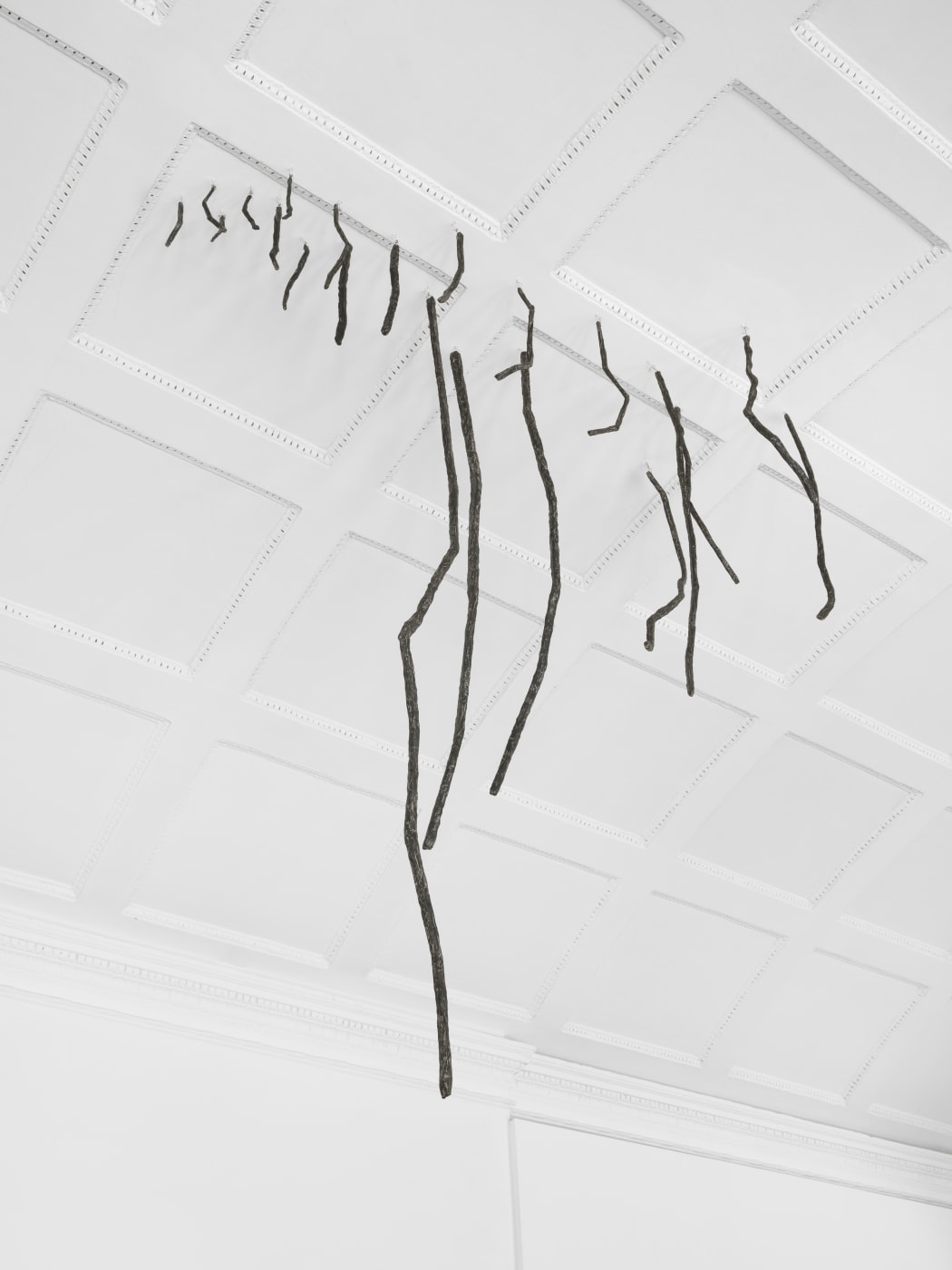
Around the same time, Castoro was experimenting with other architectural interventions, such as Small Burial (1973). The artist described how, while teaching sculpture at the University of California, Fresno, she was ‘devoid of the New York crowds of people’ and ‘felt an isolation that was relieved by staring into a barrel of wire’. Using this wire, Masonite, gesso and modelling paste, she created twig-like stalactites that grew down from the ceiling.
Small Burial, 1973
Masonite, wire, gesso, marble dust, modelling paste, graphite
160 x 148 x 42 cm (63 x 58,27 x 16,54 in)
(RC 1185)
People’s roots were growing down through my neighbour’s floor into my coffin-like apartment. […] Upon returning to New York, agriculture lifted my mood. I realised that to bury something enabled it to grow.
— Rosemarie Castoro
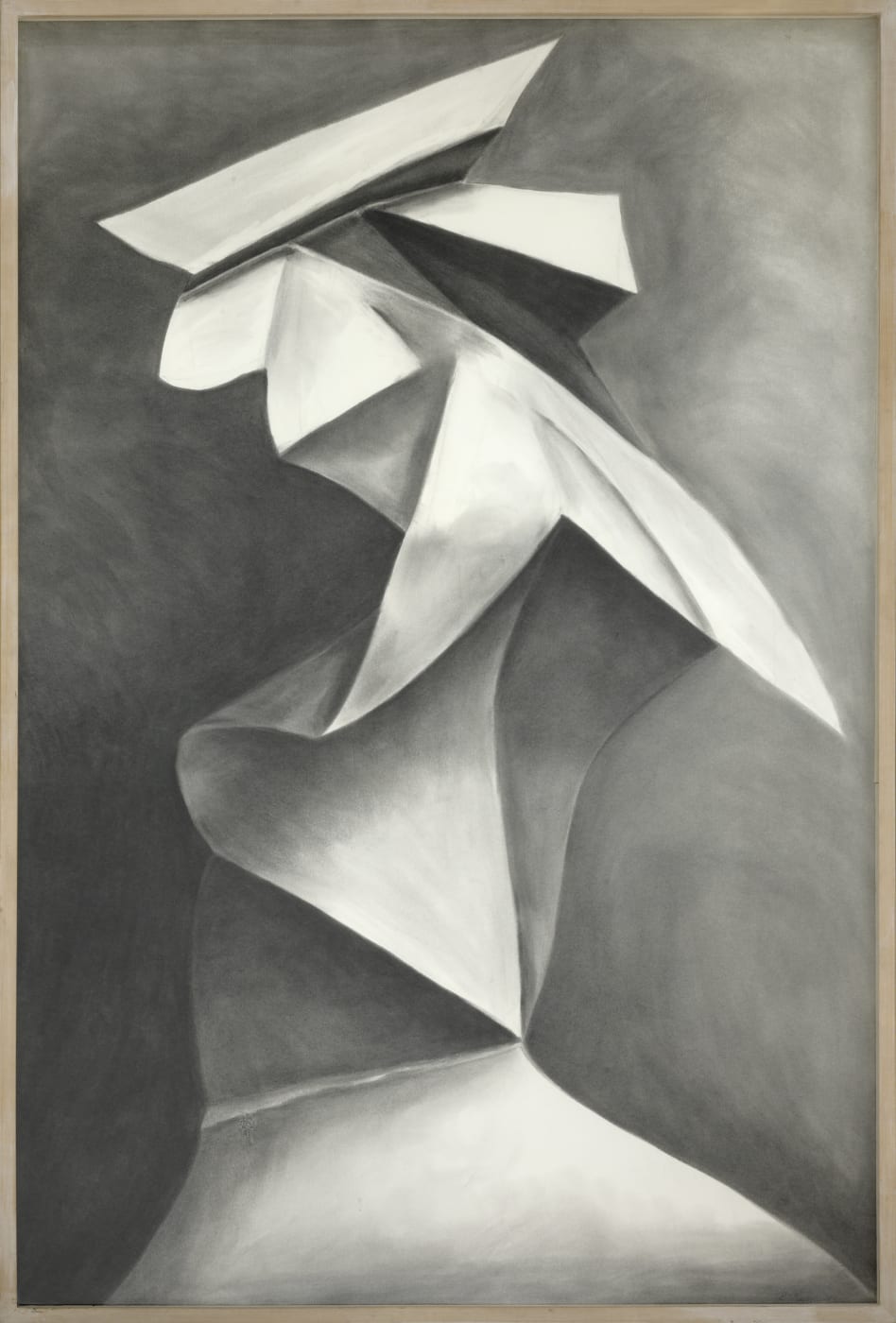
In her Portrait Flasher drawings, the layered folds that Castoro had achieved in sheets of metal are represented in two dimensions, using charcoal shading to create the illusion of depth. As contemporary reviewer Charles Shere wrote, ‘The poses in the drawings refer to the conventions of the portrait bust’ and ‘recall Vermeer, with their quiet presence and subtle lighting playing across finely modelled surfaces. The sensuous quality is partly a matter of gesture and pose’. These drawings navigate between specificity and ambiguity, suggesting without actually describing a bust-length portrait.
Pressure, 1984
Charcoal on museum board
152.4 x 101.6 cm (60 x 40 in)
(RC 1116)
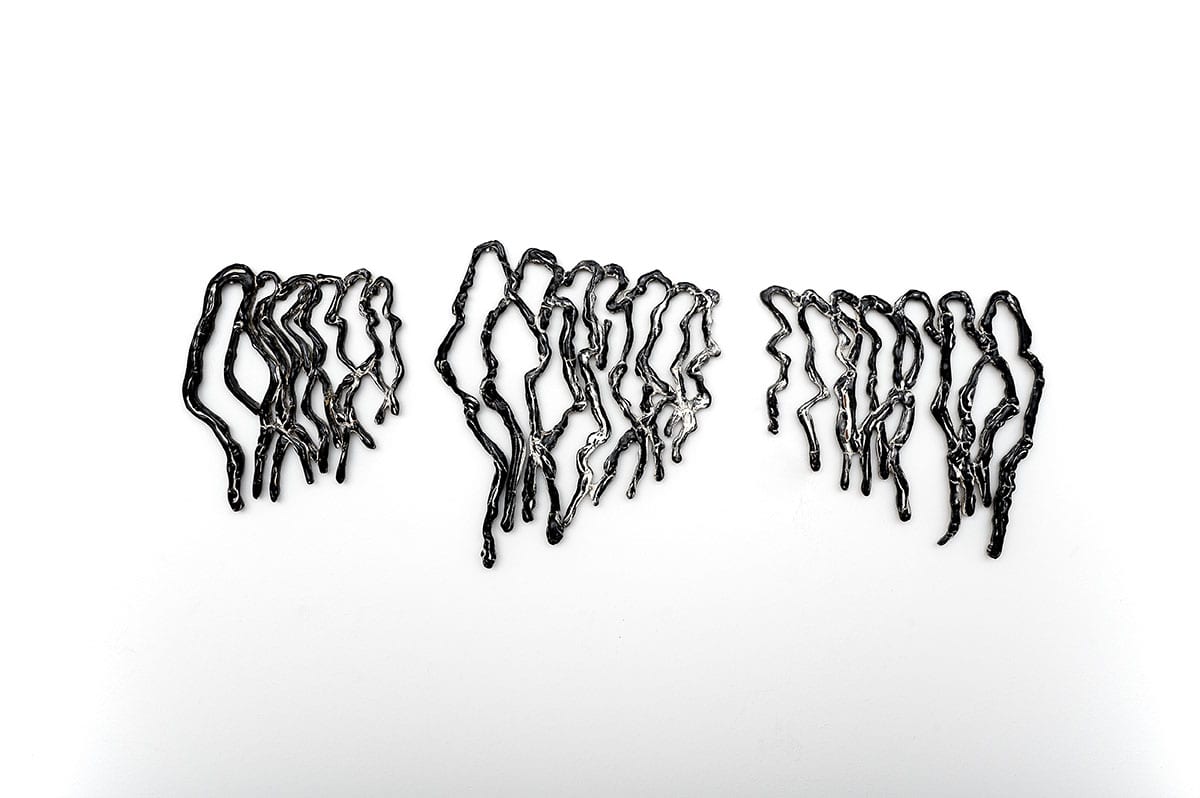
Critic Lucy R. Lippard described how the ‘brushstrokes soon acquired an animistic life of their own and developed from abstractions into […] smaller hairpinlike stick figures – “groups of people in the streets relating to each other”’. Castoro referred to these works as ‘exoskeletal auras’, inspired by her observations of crowds on the New York subway and streets as she commuted to Hunter College, where she taught in autumn 1972.
KW MEETING, 1972
Masonite, modelling paste, gesso, graphite
20.3 x 55.9 cm (22 x 8 in)
(RC 1235)

Castoro experimented with architectural interventions, such as her Cracking works from 1969, represented in the exhibition by a site-specific recreation. The idea first took shape in March 1969, when she cycled through New York leaving a white paint trail behind her from a leaking tin. She adapted this concept to create a division in her loft space:
Needing more clarity as to living and working functions, the loft was divided with a shiny aluminium taped line. On one side were living functions and the other, art. Line as reality. Drawing to describe function. Setting up a barrier and crossing it. Walking into a painting.
In April 1969, she ‘cracked’ a block of the sidewalk along 13th Street in New York, using a line of silver tape, and later applied the same treatment to the interior of Paula Cooper Gallery in New York and the Seattle World’s Fair Center.
London Cracking, 1969/2022
Based on the artist's Crackings
Aluminium tape, 1/2 inch wide
Dimensions variable
(RC 1246)

In later years, Castoro adopted metal as her medium and learned to weld in the late 1980s. She refined her skills and techniques over the years to find its most sophisticated expression in the curved lines and origami folds of her multi-part sculptural installation Mountain Range (2003–06). ‘I am currently welding stainless steel, free-standing arches, in the continuation of building a mountain range,’ she wrote.
Mountain Range, 2003–06
Welded stainless steel, 9 parts
350 x 650 cm (137.8 x 256 in)
(RC 1244)
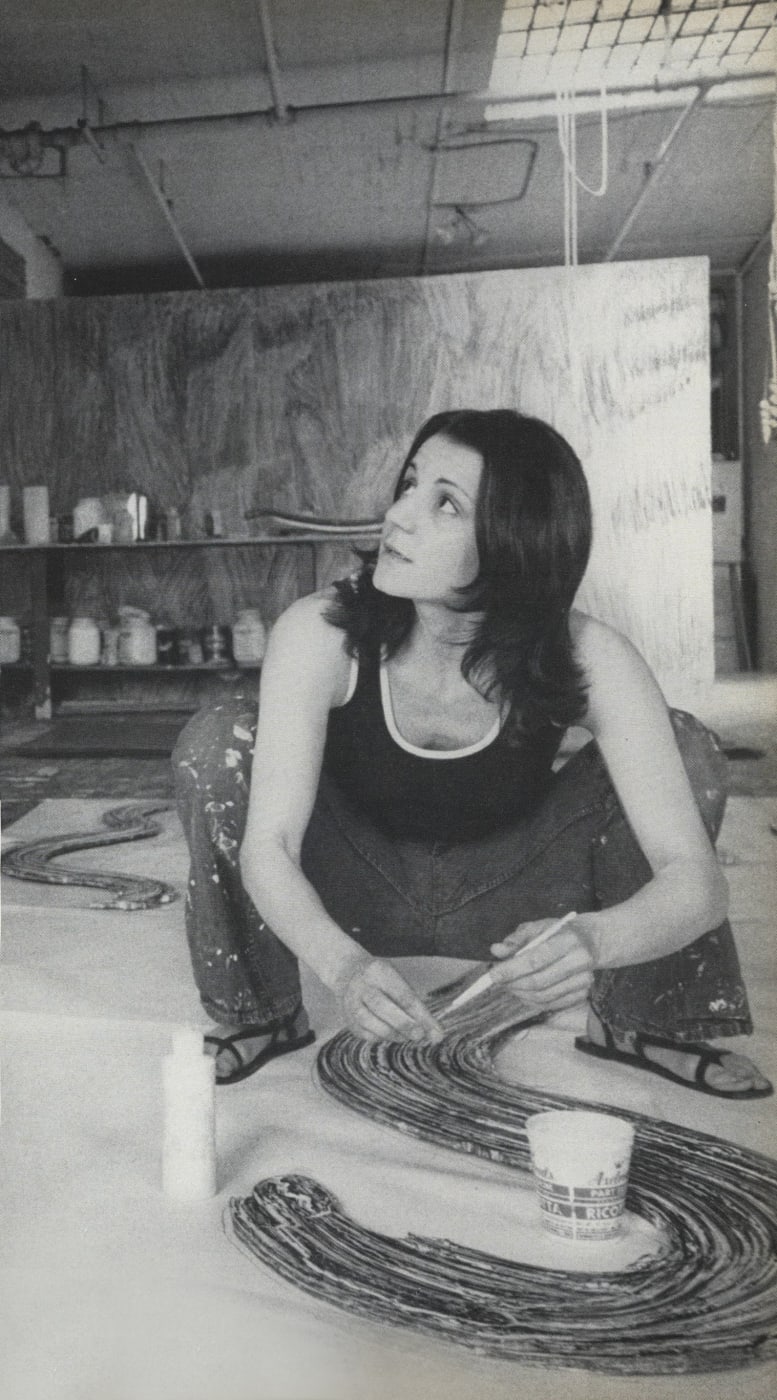
About the artist
Born in Brooklyn in 1939, Rosemarie Castoro lived and worked in New York until her death in 2015. She formed her unique artistic practice within the context of Minimalist and Conceptual art in the 1960s, sharing a SoHo loft with then-partner and fellow artist Carl Andre that became a social hub for creatives, including Lawrence Weiner, Richard Long and Sol LeWitt. Lucy R. Lippard was an early champion of Castoro's work, which was featured in the seminal Number Shows she curated, including 557,087 at the Seattle World's Fair Pavilion in September 1969, followed a few months later by 955,000 at the Vancouver Art Gallery.
The artist’s first retrospective was staged posthumously at the Museum of Contemporary Art (MACBA), Barcelona in 2017, followed by a major survey exhibition at the Museum of Contemporary Art (MAMCO), Geneva in 2019. Her work has also recently been included in important group shows at the Centre Pompidou, Paris (2021); MAK – Museum of Applied Arts, Vienna (2021); Smithsonian American Art Museum, Washington, D.C. (2019); Los Angeles County Museum of Art (2017); National Gallery of Art, Washington, D.C. (2016); Museu de Arte Moderna Rio de Janeiro (2014); Albright-Knox Art Gallery, Buffalo (2012); and MoMA PS1, New York (2003).


